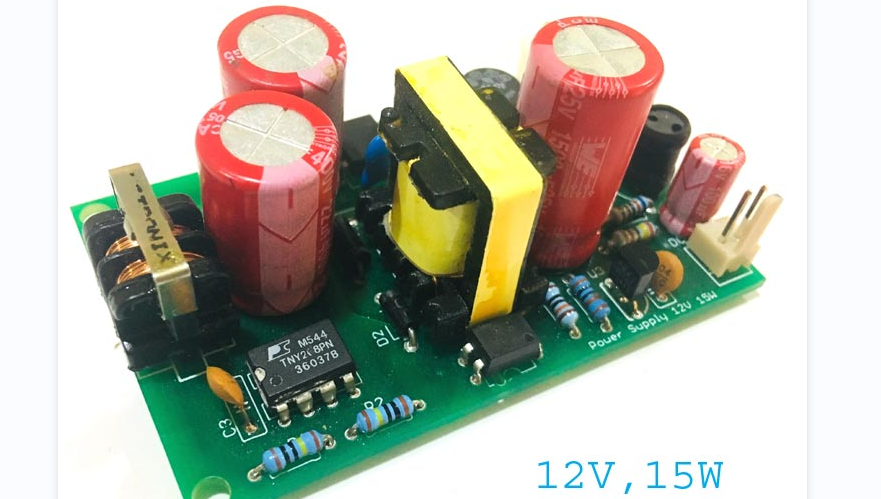In today’s electronic world, power supply circuits are essential to ensure the proper functioning of electronic devices. A power supply circuit is responsible for converting the incoming AC voltage into a DC voltage that can be used by electronic devices. These circuits can be found in almost every electronic device, ranging from simple battery-operated devices to complex systems.
Designing and implementing a power supply circuit on a printed circuit board (PCB) can be a challenging task. The power supply circuit must be designed to meet the specific voltage and current requirements of the electronic device and must be able to provide a stable and reliable power source. PCB design is also critical, as it affects the overall performance and reliability of the circuit. Proper layout and component placement are essential to minimize noise and interference and ensure proper heat dissipation.
Power Supply Circuit Basics
Components of a Power Supply Circuit
A power supply circuit is an essential component of any electronic device. It is responsible for providing a steady and stable source of power to the device’s components. The main components of a power supply circuit include:
- Transformer: Converts the AC voltage from the mains supply to a lower AC voltage.
- Rectifier: Converts the AC voltage to DC voltage.
- Filter: Removes the AC ripple from the DC voltage.
- Voltage Regulator: Maintains a steady output voltage.
Types of Power Supply Circuits
There are two main types of power supply circuits: linear and switching.
Linear power supply circuits are simple and inexpensive. They use a transformer, rectifier, filter, and voltage regulator to provide a steady output voltage. However, they are not very efficient and generate a lot of heat.
Switching power supply circuits are more complex and expensive. They use a high-frequency oscillator to convert the AC voltage to DC voltage. They are more efficient and generate less heat than linear power supply circuits.
In conclusion, understanding the basics of a power supply circuit is crucial for designing and building electronic devices. The components and types of power supply circuits must be carefully considered to ensure the device operates correctly and efficiently.
Designing a Power Supply Circuit on PCB
When designing a power supply circuit on a PCB, there are several important considerations to keep in mind. These include the schematic design, PCB layout design, component placement, and routing. Each of these steps is critical to ensuring that the power supply circuit functions properly and reliably.
Schematic Design
The first step in designing a power supply circuit on a PCB is to create a schematic design. This involves selecting the appropriate components and determining how they will be connected to form the circuit. It is important to choose components that are suitable for the intended application and that can handle the required voltage and current levels.
PCB Layout Design
Once the schematic design is complete, the next step is to create the PCB layout design. This involves placing the components on the PCB and routing the traces to connect them according to the schematic. It is important to ensure that the layout is optimized for the intended application and that the traces are properly spaced and routed to minimize noise and interference.
Component Placement
Component placement is another important consideration when designing a power supply circuit on a PCB. The placement of components can have a significant impact on the performance and reliability of the circuit. It is important to ensure that components are placed in a logical and efficient manner, with consideration given to factors such as heat dissipation and signal integrity.
Routing
Routing is the final step in designing a power supply circuit on a PCB. This involves connecting the components on the PCB using traces and vias. It is important to ensure that the routing is optimized for the intended application and that the traces are properly spaced and routed to minimize noise and interference. It is also important to ensure that the routing is efficient and that the circuit can be easily assembled and tested.

In conclusion, designing a power supply circuit on a PCB requires careful consideration of several important factors, including schematic design, PCB layout design, component placement, and routing. By following these guidelines and using appropriate tools and techniques, it is possible to create a reliable and efficient power supply circuit that meets the needs of the intended application.
Testing and Troubleshooting
Testing the Power Supply Circuit
Before connecting the power supply circuit to your device, it is important to test it to ensure that it is working correctly. One way to test the circuit is to use a multimeter to measure the output voltage. Connect the multimeter to the output terminals of the circuit and measure the voltage. The measured voltage should be within the specified range for your device. If the voltage is too high or too low, you may need to adjust the circuit or the components.
Another way to test the circuit is to use a load resistor to simulate the device load. Connect the load resistor to the output terminals and measure the voltage and current. The measured values should be within the specified range for your device. If the values are not correct, you may need to adjust the circuit or the components.
Troubleshooting Common Issues
If the power supply circuit is not working correctly, there are several common issues that you may encounter. One of the most common issues is a short circuit. A short circuit can be caused by a damaged component or a misplaced wire. To troubleshoot a short circuit, you can use a multimeter to check for continuity between the circuit components. If you find a short circuit, you will need to replace the damaged component or reposition the wire.
Another common issue is a voltage drop. A voltage drop can be caused by a high resistance in the circuit or a weak power source. To troubleshoot a voltage drop, you can use a multimeter to measure the voltage at different points in the circuit. If you find a voltage drop, you may need to replace the high resistance component or use a stronger power source.

In conclusion, testing and troubleshooting the power supply circuit is an important step in ensuring that your device works correctly. By using a multimeter and following the steps outlined above, you can identify and fix common issues with the circuit.
Conclusion
In conclusion, designing a power supply circuit on a PCB requires careful consideration of various factors such as the input voltage, output voltage, current requirements, and efficiency. It is important to choose the right components and layout the circuit in a way that minimizes noise and interference.
When selecting components, it is important to choose ones with low ESR and high ripple current ratings. This will help to reduce the amount of noise in the circuit and ensure stable output voltage. Additionally, using a switching regulator instead of a linear regulator can increase efficiency and reduce heat dissipation.
Layout is also crucial in power supply design. Placing components in close proximity to each other can reduce the length of the traces, which in turn reduces the amount of noise and interference. It is also important to keep high current traces as short and wide as possible to minimize voltage drop and power dissipation.
Finally, it is important to test the power supply circuit thoroughly before using it in a final product. This can involve measuring output voltage and current, testing for noise and interference, and verifying that the circuit can handle the required load.
Overall, designing a power supply circuit on a PCB requires careful consideration of various factors. By selecting the right components and laying out the circuit in a way that minimizes noise and interference, it is possible to create a reliable and efficient power supply circuit.
Comments are closed